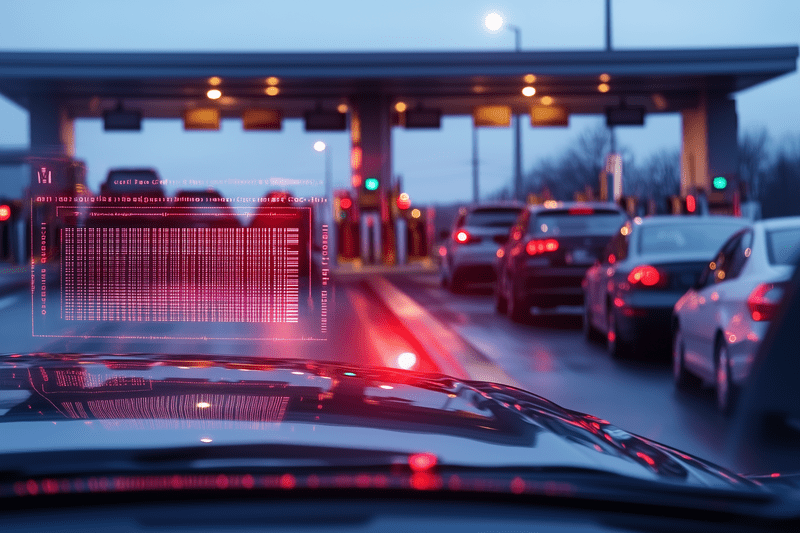
FASTag was introduced in India in 2016 as part of the National Electronic Toll Collection (NETC) program under the National Highways Authority of India (NHAI) with the promise of making toll payments faster and easier. On paper, it sounds perfect – no more fumbling for cash, no more long waits at toll booths. But as with many things, the reality is more complex. My recent experience with FASTag has led me to question whether it’s really just a convenience or if it comes with additional, more concerning implications.
The Reality Behind FASTag
At its core, FASTag is an RFID-based system designed to automate toll payments. Sounds simple, right? Just stick a FASTag on your windshield, and you’re good to go. However, while initially voluntary, FASTag has been mandatory since December 2019, with full enforcement starting in 2021. If you don’t have one, you might face double toll fees or even risk having your vehicle blacklisted.
But there’s another layer to this – each vehicle can only have a single active FASTag at a time. This restriction is quite different from how we use other payment instruments like credit or debit cards, where you can have multiple cards linked to the same account, each serving the same purpose. If FASTag is just a payment instrument, why does it have to be tied to a single tag per vehicle?
Also, why does FASTag need to be linked to your vehicle’s engine or chassis number? Isn’t the publicly visible vehicle registration number sufficient? If it’s just about paying tolls, why should it require details like your driving licence number or Aadhaar number or your home address? In the old system, you just handed over cash. Why do we suddenly need all this personal information?
These requirements seem to extend beyond what’s necessary for toll collection. They effectively turn FASTag into a tool of surveillance that can monitor where you go, when you go, and how often you travel. This level of data collection is concerning, especially when it’s tied to your identity in such a rigid way.
When the System Fails, You Pay the Price
Recently, I faced firsthand the consequences of relying on this system. The sudden closure of Paytm Payments Bank left me and many others stranded. My FASTag was closed without warning, and I had no choice but to buy a new one or risk paying double toll fees. This disruption in the payment ecosystem meant that users like me were forced to bear the cost, all because of a failure in the system.
This incident isn’t isolated. Imagine driving up to a toll booth only to find that your FASTag isn’t working. Maybe the system’s down, or there’s an issue with your account. In such cases, the very tool designed to save time ends up creating additional hassles. If the promise of shorter wait times fails, shouldn’t you be allowed to pass without paying the toll? After all, the purpose of FASTag is to save time, not penalise you for technical failures.
Moreover, the imposition of double toll fees when FASTag fails feels more punitive than corrective. Penalties should be proportional to the inconvenience caused, but doubling the toll for a minor delay seems excessive and unfair. This approach raises important legal questions about fairness, as a brief delay at a toll booth hardly justifies a 100% increase in fees.
The Argument for Convenience – And Why It Falls Short
Most arguments in favor of FASTag center around its efficiency. It reduces congestion at toll booths and is presented as a tool to streamline traffic flow. But does it truly deliver on this promise? If FASTag were solely about convenience, why isn’t it optional? Why isn’t there the flexibility to pay by cash or other methods, such as Unified Payments Interface (UPI)? Furthermore, why does it require the submission of personal details for activation?
Then there’s the issue of transparency. FASTag links your toll payments directly to your vehicle registration, making it easy to track your movements. While this approach is said to enhance transparency and reduce toll evasion, it also raises important questions about privacy. Is it necessary to trade your right to move freely without being tracked in the name of transparency?
And let’s not forget the environmental argument. Yes, reducing idle time at toll booths can save fuel, which is good for the environment. But does that justify turning every vehicle on the road into a data point in a potential surveillance network? There may be other ways to achieve these environmental benefits without compromising your privacy.
What Should FASTag Be?
FASTag doesn’t need to be what it’s become – a mandatory tool linked to your identity and personal details. It could be one of several payment options available at toll booths. Ideally, users should have the freedom to choose how they pay, without being required to use a system that tracks their every move.
Moreover, FASTag should be flexible. If your FASTag stops working due to a system failure, you shouldn’t be penalized. The promise of reduced wait times should come with a guarantee – if you’re stuck in line because of a technical issue, you shouldn’t have to pay the toll at all. There should be a mechanism to prove when the system fails and a clear path to compensation.
The Bottom Line
FASTag, in its current form, is more than just a convenience. It is a potential tool for surveillance and control, wrapped up in the guise of efficiency. In any democratic setup, the shifting nature of political power makes it risky to entrust such information to any single entity without strong, transparent, and enforceable safeguards. What might be used responsibly today could be misused tomorrow.
The government needs to rethink its approach, making FASTag optional, flexible, and focused solely on toll payments – not on tracking citizens. Consumers shouldn’t have to bear the cost of system failures or be forced to trade their privacy for a slightly faster toll booth experience. The current system is flawed, and it’s time for a change. FASTag should serve the people, not control them.



 The Mystery of Human Relationships
The Mystery of Human Relationships